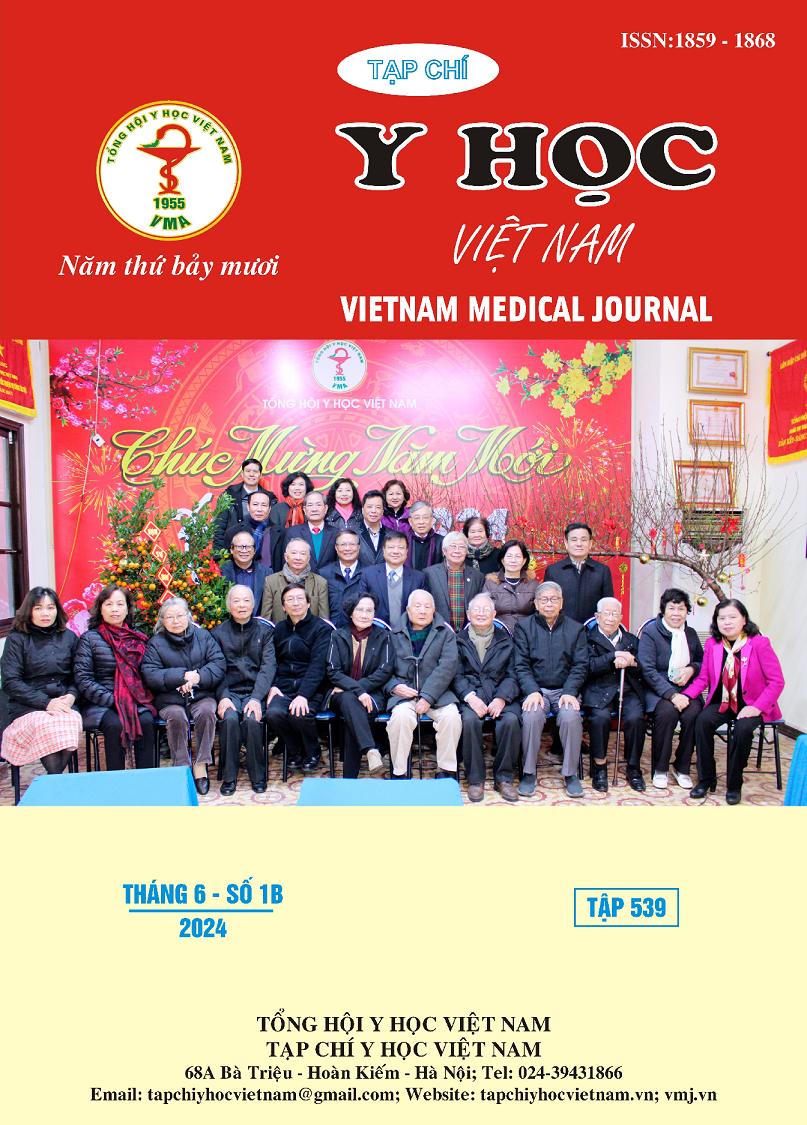SOME FACTORS RELATED TO PEDIATRIC EPILEPSY AT CAN THO CHILDREN'S HOSPITAL 2023-2024
Main Article Content
Abstract
Background: Epilepsy is one of the most common serious chronic neurological diseases affecting approximately 65 million people worldwide. The disease greatly affects children in terms of mental health, the risk of delayed psychomotor development. Research objective: Identify some factors related to pediatric epilepsy at Can Tho Children's Hospital in 2023-2024. Research subjects and methods: Children from 2 months to 15 years old were hospitalized for seizures and treated at Can Tho Children's Hospital. With the disease group: diagnosed and classified as epilepsy according to the International League Against Epilepsy (ILAE) 2017. Control group: admitted to the hospital because of febrile seizures and did not meet the criteria for diagnosing epilepsy. Results: Total 201 cases (67 cases and 134 controls). According to univariate analysis, risk factors related to childhood epilepsy include: child age ≥ 24 months; The child's gender is male; history of premature birth; history of birth asphyxia; family history of febrile seizures or epilepsy; form of partial seizures; no recurrence within 24 hours; Seizure duration ≥ 5 minutes. According to Logistic regression analysis, the most important risk factor is partial seizure morphology (OR=20.24), followed by history of birth asphyxia (OR=5.37); Child's age ≥ 24 months (OR=3.20); Child's gender is male (OR=2.23). Conclusion: The most important risk factor is the form of partial seizures, followed by a history of birth asphyxia, and the child's age ≥ 24 months; The child's gender is male.
Article Details
Keywords
related factors, epilepsy, children, medical history.
References
2. Fine A., Wirrell E.C. Seizures in children. Pediatrics in review. 2020. 41(7), 321-347, doi: 10.1542/pir.2019-0134.
3. Hunter M.B., Yoong M., Sumpter R.E., et al. Incidence of early-onset epilepsy: A prospective population-based study. Seizure. 2020. 75, 49-54, doi:10.1016/j.seizure.2019.12.020.
4. Mohammed H.B.J., Al-Ogaili S.S.C. Risk Factors Associated with epilepsy among Children in Al-Najaf Province: A Case Control Study. Scopus IJPHRD citation score. 2019. 10(1), 877-882, doi:10.5958/0976-5506.2019.00170.0.
5. Rehman Z.U. Clinical Characteristics and Etiology of Epilepsy in Children Aged Below Two Years: Perspective From a Tertiary Childcare Hospital in South Punjab, Pakistan. Cureus. 2022. 14(4), doi:10.7759/cureus.23854.
6. Sartori S., Nosadini M., Tessarin G., et al. First‐ever convulsive seizures in children presenting to the emergency department: risk factors for seizure recurrence and diagnosis of epilepsy. Developmental Medicine & Child Neurology. 2019. 61(1), 82-90, doi:10.1111/ dmcn.14015.
7. Specchio N., Wirrell E.C., Scheffer I.E., et al. International League Against Epilepsy classification and definition of epilepsy syndromes with onset in childhood: Position paper by the ILAE Task Force on Nosology and Definitions. Epilepsia. 2022. 63(6), 1398-1442, doi:10.1111/ epi.17241.
8. Tenney J.R. Epilepsy-Work-Up and Management in Children. Semin Neurol. 2020. 40(6), 638-646, doi:10.1055/s-0040-1718720.


